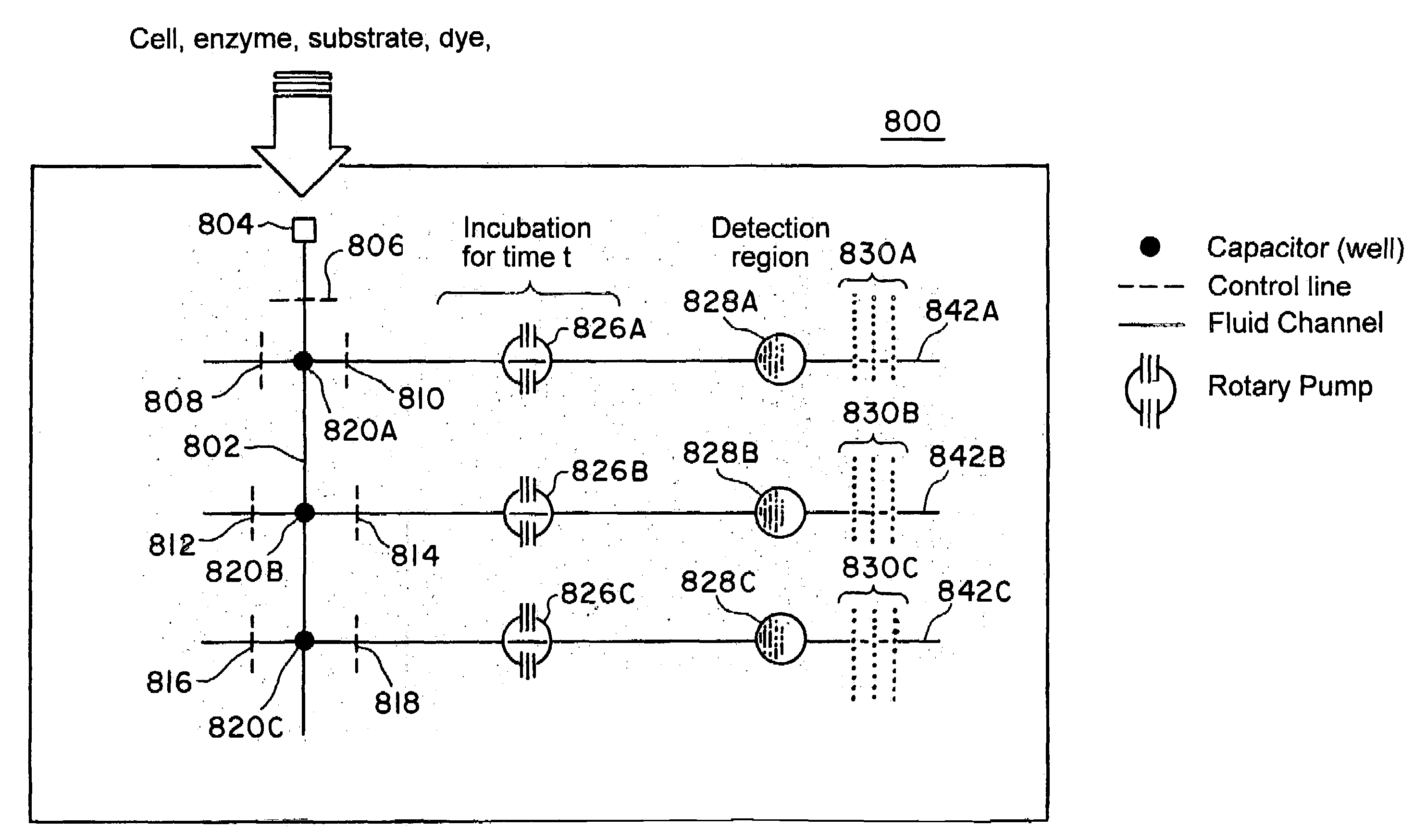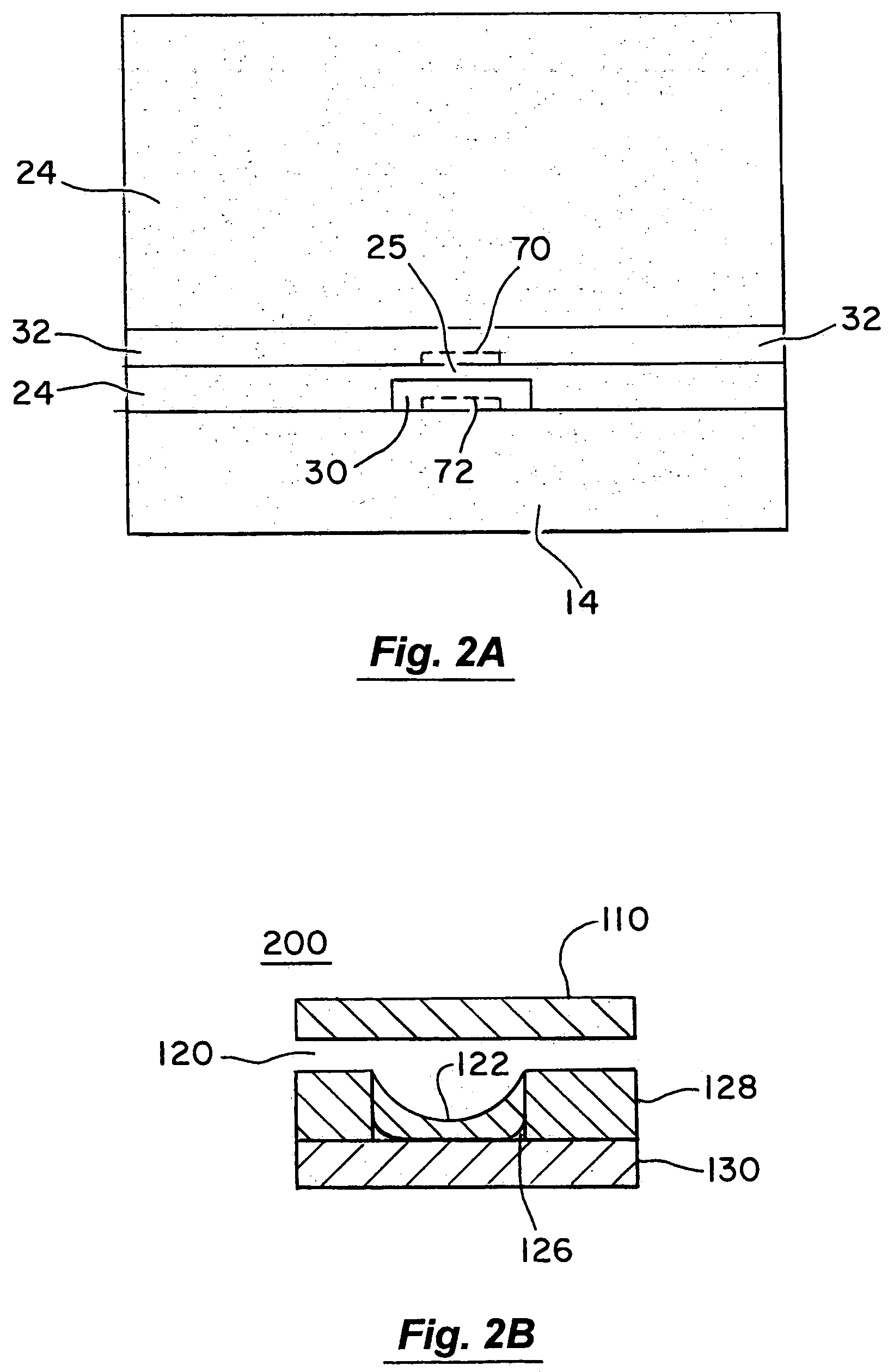Apparatus and methods for conducting assays and high throughput screening
a microfluidic and screening apparatus technology, applied in the direction of fluid speed measurement, flow mixer, chemical vapor deposition coating, etc., can solve the problems of limiting the usefulness of current microfluidic devices, requiring only a minimal amount of samples, and requiring only a small amount of samples
- Summary
- Abstract
- Description
- Claims
- Application Information
AI Technical Summary
Benefits of technology
Problems solved by technology
Method used
Image
Examples
example 1
Caspase Activity
I. Background
[0433]Caspase-3 (also known as CPP32, apopain and Yama), a member of the interleukin-1β converting enzyme, is one of the cysteine proteases most frequently activated during the process of programmed cell death (apoptosis) Caspase-3 is essential for normal brain development, and has been suggested to contribute to the molecular pathogenesis of several neurological diseases. Thus, development of caspase inhibitors can be used as potential therapeutic approaches for chronic neurodegenerative disorders. However, the assay model is not limited to this protein.
II. Experimental Design
[0434]Using the PC12 pheochromocytoma cell line, a well-characterized model of neuronal apoptotic cell death (see, e.g., Rukenstein et al. (1991) J. Neurosci. 11:2552-2563; and Batistatou and Greene (1991) J. Cell Biol. 115:461-71), inhibitors of caspase-3 activity can be screened. Many other cell lines known in the art can be used as well.
[0435]Screens are conducted, for example, ...
example 2
Screening NGF Agonists in PC12 Cells
I. Background
[0442]Screens to identify agonists of receptors of interest can be performed using the present devices. This example describes a method to screen for agonists of nerve growth factor receptor in PC12 cells (described supra). Docking of TrkA with the NGF receptor initiates receptor dimerization, catalytic phosphorylation of cytoplasmic residues on the receptor, and a cascade of signaling events (see, e.g., Kaplan and Stephens (1994) J. Neurobio. 25:1404-1417). Upon TrkA activation, the PI-3K / Akt pathway is activated which results in phosphorylation of Akt (see, e.g., Andjelkovic M. et al (1998) Eur. J. Biochem. 25:195-200). Simultaneously, the MAP kinase pathway is activated which results in phosphorylation of Erk (Kaplan and Stephens, 1994).
II. Experimental Design
[0443]Although screens can be conducted with variety of different devices, the following method is described with reference to the microfluidic device depicted in FIG. 13.[044...
example 3
Screening for G-Protein Coupled Receptor (GPCR) Agonists
I. Background
[0451]The calcium ion is a very important messenger in cells. The concentration of free Ca2+ is extremely low (10−7 M) in the cytpsol compared to the extracellular fluid (10−3 M) or to the endoplasmic reticulum. A variety of reactions such as receptor-ligand interactions mediate changes in the concentration of free intracellular calcium ([Ca2+]i). The change in intracellular calcium occurs rapidly.
II. Experimental Design
[0452]The Fluo-3AM (Molecular Probes Cat. No.1241) absorption spectrum is compatible with excitation at 488 nm by argon-ion laser sources. Upon Ca2+ binding, there is a large increase in fluorescence intensity. Fluo-3 AM is cell permeant. A variety of cell types can be utilized including, CHO-K1, HEK-293 and COS.
[0453]Assays are conducted as follows:[0454]1. Cells (introduced via inlet A.a), and 2 μM Fluo-3 calcium indicator (introduced via inlet A.b) are added to main flow channel A; such that ther...
PUM
| Property | Measurement | Unit |
|---|---|---|
| Tm | aaaaa | aaaaa |
| melting temperature | aaaaa | aaaaa |
| melting temperature | aaaaa | aaaaa |
Abstract
Description
Claims
Application Information
 Login to View More
Login to View More - R&D
- Intellectual Property
- Life Sciences
- Materials
- Tech Scout
- Unparalleled Data Quality
- Higher Quality Content
- 60% Fewer Hallucinations
Browse by: Latest US Patents, China's latest patents, Technical Efficacy Thesaurus, Application Domain, Technology Topic, Popular Technical Reports.
© 2025 PatSnap. All rights reserved.Legal|Privacy policy|Modern Slavery Act Transparency Statement|Sitemap|About US| Contact US: help@patsnap.com



